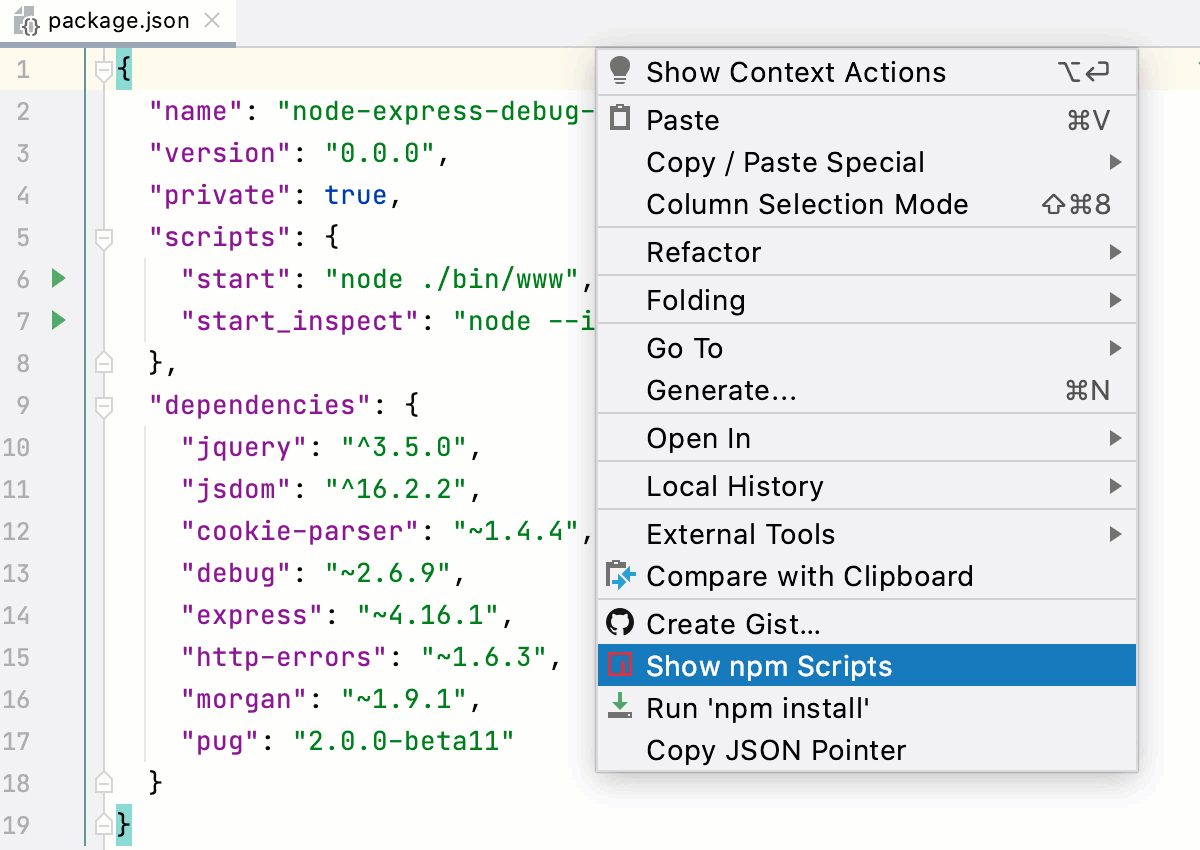
This page appears only when the Node.js bundled plugin is enabled in the Installed tab of the Settings/Preferences | Plugins page as described in Managing plugins.
Phpstorm Npm Docker

The following Node.js versions are supported in PhpStorm 2020.3:
Node.js 10
Node.js 12
Node.js 14
Node.js 15

Get code examples like 'how to use npm in webstorm' instantly right from your google search results with the Grepper Chrome Extension. PHPStorm: It is an IDE that is developed for PHP and Web Developers that contains several modern tools. It also offers features such as functionality, Code navigation, smart code editor for PHP, Testing and Debugging facilities. Apart from these, the presence of Database technologies is an interesting aspect of PHPStorm.
Learn more from Supported Node.js versions
Phpstorm Npm Remote Interpreter
| Item | Description |
|---|---|
| Node interpreter | In this field, specify the default Node.js interpreter for the current project. PhpStorm will automatically use it every time you select the Select a configured interpreter from the list or click and configure a new one in the dialog that opens as described in Configuring a local Node.js interpreter. If you select node, the system Node.js version is used. Here you can choose or configure only a local Node.js interpreter, that is, a Node.js installed on your computer, or a Node.js on Windows Subsystem for Linux, see Configuring a local Node.js interpreter and Using Node.js on Windows Subsystem for Linux for details. Remote interpreters are configured in the Configure Node.js Remote Interpreter dialog accessible from the Run/Debug Configuration: Node.js. See Node.js with Docker, Node.js via SFTP, Node.js via SSH, and Node.js with Vagrant for details. |
| Version | This read-only field shows the current version of Node.js. |
| Coding assistance for Node.js | Coolmuster mobile transfer. Select this checkbox to configure the Node.js Core module sources as a JavaScript library and associate it with your project. As a result, PhpStorm provides code completion, reference resolution, validation, and debugging capabilities for When the configuration is completed, PhpStorm displays information about the currently configured version. If you need code completion for Node.js APIs only in some parts of your project, you can configure that using the Manage scopes link. In the Usage dialog that opens, click the relevant directories and for each of them select the configured Node.js Core library from the list. Learn more from Configuring the scope of a library. |
| Package manager | In this field, choose the package manager (npm, Yarn, or pnpm) for the current project. PhpStorm uses the By default, PhpStorm suggests npm. However if you open a project with a yarn.lock file and Yarn is installed on your computer, PhpStorm automatically changes the package manager for this project to Yarn. Accordingly, if you open a project with a pnpm-lock file and pnpm is installed on your computer, PhpStorm automatically changes the package manager for this project to pnpm. You can also set Yarn 1 or pnpm as default PhpStorm package manager. |
| Packages | The Packages area shows a list of all the NPM -dependent packages that are currently installed on your computer.
|

